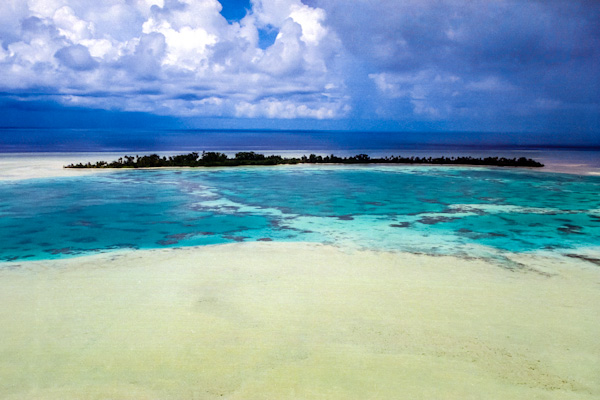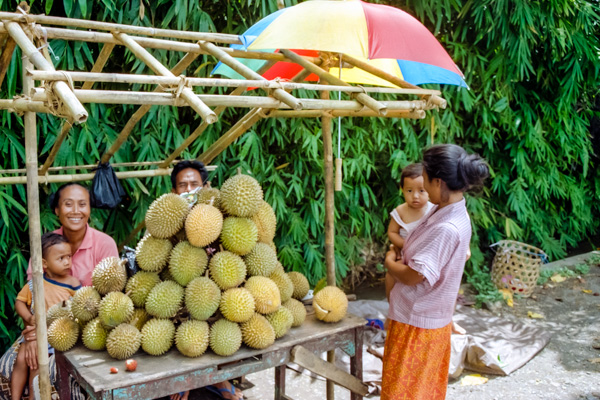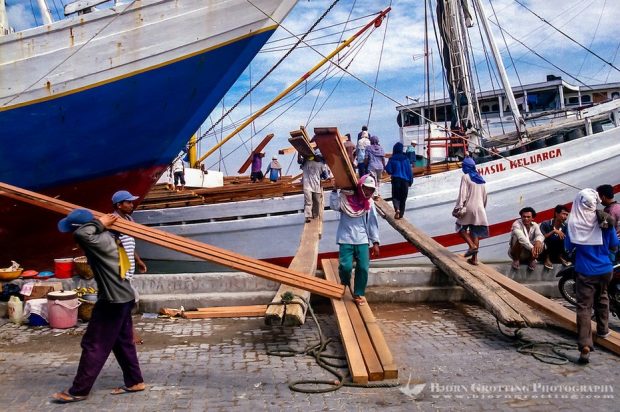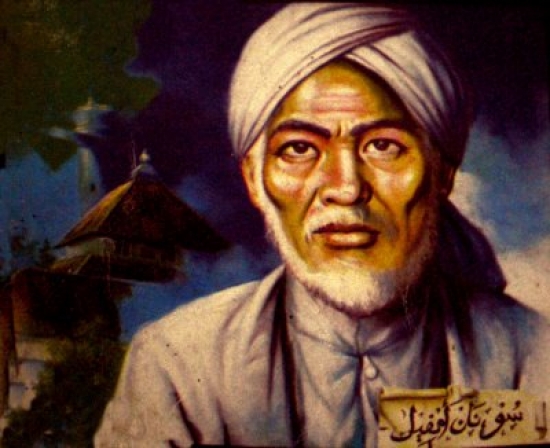. Baby rice ready to be planted on the irrigated rice fields. (Photo Bjorn Grotting)” src=”http://www.photoshelter.com/img-get/I0000U1G1z_zaMi8/s/960/640/Indonesia-Bali-Bedulu-2301-Bali.jpg” width=”960″ /> Bali, Gianyar, Bedulu. Baby rice ready to be planted on the irrigated rice fields. (Photo Bjorn Grotting)
The origins of rice have been debated for some time, but the plant is of such antiquity that the precise time and place of its first development will perhaps never be known. It is certain, however, that the domestication of rice ranks as one of the most important developments in history, for this grain has fed more people over a longer period of time than has any other crop. The earliest settlements of those persons responsible for domestication undoubtedly were in areas offering a wide range of plant and animal associations within a limited geographical area. Such sites offered a variety of food sources over a span of seasons to societies dependent on hunting and gathering for their food supply.
These earliest settlements might well have been near the edge of the uplands, but on gently rolling topography and close to small rivers that provided a reliable water supply. For centuries, humans maintained themselves by fishing in the rivers, hunting in the forests, and gathering edible plant products. The earliest agriculture, a simple form of swidden, may have developed by accident when women of the settlement recognized that the mix of plant life growing around the midden was especially rich in edible forms.
The earliest agriculture was probably focused on plants that reproduced vegetatively, but the seeds of easily shattering varieties of wild rice such as Oryza fatua may have found their way to the gardens at an early date. If these assumptions are correct, then domestication most likely took place in the area of the Korat or in some sheltered basin area of northern Thailand, in one of the longitudinal valleys of Myanmar’s Shan Upland, in southwestern China, or in Assam.

Cultivated rices belong to two species, O. sativa and O. glaberrima. Of the two, O. sativa is by far the more widely utilized. O. sativa is a complex group composed of two forms endemic to Africa but not cultivated, and a third form, O. rufipogon, having distinctive partitions into South Asian, Chinese, New Guinean, Australian, and American forms. The subdivision of O. sativa into these seven forms began long ago and came about largely as a result of major tectonic events and worldwide climatic changes. It is postulated, based on measurements by electrophoresis, that the Australian form of O. sativa began to diverge from the main forms about 15 million years ago. At that time, during the Miocene, the Asian portion of Gondwanaland collided with the Australia/New Guinea portion, creating a land bridge across which O. sativa migrated. Once the blocks separated, the Australian form was free to follow an evolutionary path somewhat different from that followed by the O. sativa on the mainland.
Divergence between the South Asian and Chinese forms, the ancestors of what are commonly referred to today as indica and japonica (or sinica) types, is believed to have commenced 2-3 million years ago. At that time, migration of fauna across the proto-Himalaya was still possible, and with the animals went wild rice. The climate was suitable for rice even in what today is Central Asia, and north China had almost ideal conditions.
Botanical evidence concerning the distribution of cultivated species is based chiefly on the range and habitat of wild species that are believed to have contributed to the cultivated forms. The greatest variety of such rices is found in the zone of monsoonal rainfall extending from eastern India through Myanmar, Thailand, Laos, northern Vietnam, and into southern China. This diversity of species, including those considered by many to have been involved in the original domestication process, lends support to the argument for mainland Southeast Asia as the heartland of rice cultivation.
Linguistic evidence also points to the early origin of cultivated rice in this same Asian arc. In several regional languages the general terms for rice and food, or for rice and agriculture, are synonymous. Such is not the case in any other part of the world. Religious writings and practices are also seen as evidence of the longevity of rice as a staple item of the diet. Both Hindu and Budhist scriptures make frequent reference to rice, and in both religions the grain is used as a major offering to the gods. In contrast, there is no correspondingly early reference to rice in Jewish scriptures of the Old Testament, and no references exist in early Egyptian records. Archeologists have found evidence that rice was an important food in Mohenjo-Daro as early as 2500 B.C. and in the Yangtze Basin in the late Neolithic period (Chang 1967a).
The earliest and most convincing archeological evidence for domestication of rice in Southeast Asia was discovered by Wilhelm G. Solheim II in 1966. Pottery shards bearing the imprint of both grains and husks of O. sativa were discovered at Non Nok Tha in the Korat area of Thailand. These remains have been confirmed by 14C and thermoluminescence testing as dating from at least 4000 B.C. This evidence not only pushed back the documented origin of cultivated rice but, when viewed in conjunction with plant remains from 10,000 B.C. discovered in Spirit Cave on the Thailand-Myanmar border, suggests that agriculture itself may be older than was previously thought. No parallel evidence has been uncovered in Egyptian tombs or from Chaldean excavations.
Spreading of rice

From an early beginning somewhere in the Asian arc, the process of diffusion has carried rice in all directions until today it is cultivated on every continent save Antarctica. In this early hearth area, rice was grown in forest clearing under a system of shifting cultivation. The crop was grown by direct seeding and without standing water. Rice was grown on “farms” under conditions only slightly different from those to which wild rice was subject. A similar but independent pattern of the incorporation of wild rices into an agricultural system may well have taken place in one or more locations in Africa at approximately the same time. It was in China that the processes of puddling soil and transplanting seedlings were likely refined. Both operations became integral parts of rice farming and remain very widely practiced to this day.
Puddling breaks down the internal structure of soils, making them much less subject to water loss through percolation. In this respect, it can be thought of as a way of extending the utility of a limited supply of water. Transplanting is the planting of 1- to 6- wk-old seedlings in standing water. Under these conditions, the rice plants have an important head start over a very wide range of competing weeds, which leads to higher yields. Transplanting, like puddling, provides the farmer with the ability to better accommodate the rice crop to a finite and fickle water supply by shortening the field duration (since seedlings are grown separately, and a higher density) and adjusting the planting calendar.
With the development of puddling and transplanting, rice became truly domesticated. In China, the history of rice in river valleys and low-lying areas is longer that its history as a dry land crop. In Southeast Asia, by contrast, rice was originally produced under dry land conditions in the uplands, and only recently did it come to occupy the vast river deltas. Migrant peoples from South China or perhaps northern Vietnam carried the traditions of wetland rice cultivation to the Philippines during the second millennium B.C., and Deutero-Malays carried the practice to Indonesia about 1500 B.C. From China or Korea, the crop was introduced to Japan no later than 100 B.C.
Movement to western India and south to Sri Lanka was also accomplished very early. The date of 2500 B.C. has already been mentioned for Mohenjo-Daro, while in Sri Lanka, rice was a major crop as early as 1000 B.C. The crop may well have been introduced to Greece and neighboring areas of the Mediterranean by the returning members of Alexander the Great’s expedition to India ca. 344-324 B.C. From a center in Greece and Sicily, rice spread gradually throughout the southern portions of Europe and to a few locations in North Africa.

Interestingly enough, medical geographers in the 16th century played an important role in limiting the adoption of rice as a major crop in the Mediterranean area. During the 16th and early 17th centuries, malaria was a major disease in southern Europe, and it was believed to be spread by the bad air (hence the origin of the name) of swampy areas. Major drainage projects were undertaken in southern Italy, and wetland rice cultivation was discouraged in some regions. In fact, it was actually forbidden on the outskirts of a number of large towns. Such measures were a significant barrier to the diffusion of rice in Europe.
The suspicion that rice fields cased “mal-air” did not entirely disappear with the end of the Renaissance. In late 1988, the United States Environmental Protection Agency and the National Science Foundation both issued reports on the “greenhouse effect” They agreed that there has already been some warming of the earth; that irrespective of whatever action governments may take, the world is destined for a further temperature increase of at least 2 oC; and that without strong human intervention the increase may be much greater. The greenhouse effect is caused in large part by the release, though human activity, of certain gases that dirty the atmospheric window and prevent the escape of the earth’s heat to outer space.
Carbon dioxide has long been the prime suspect, but it is now known that, molecule for molecule, methane traps 20 times more energy. Both reports also agree that methane concentrations are increasing at the rate of approximately 1%/yr. A major methane source, perhaps even the largest of all, is flooded Riceland. Not only do methane-producing bacteria thrive in such an environment, but rice plants themselves act as gas vents, putting greater-than-expected concentrations into the atmosphere. The problem is, of course, magnified by the extension of rice area, by the expansion of irrigation facilities, and especially by the enlargement of double-cropped rice areas. Rice fields are suspected of putting 115 million t of methane into the atmosphere each year. This is at least equal to the total production from all of the world’s natural swamps and wetlands. Is it possible that agricultural intensification is hastening environmental degradation? Were the 16th century geographers on the right track after all?
As a result of Europe’s great Age of Exploration, new lands to the west became available for exploitation. Rice cultivation was introduced to the New World by early European settlers. The Portuguese carried it to Brazil, and the Spanish introduced its cultivation to several locations in Central and South America. The first record for North America dates from 1685, when the crop was produced on the coastal lowlands and island of what is now South Carolina. The crop may well have been carried to that area by slaves brought from Madagascar. Early in the 18th century, rice spread to Louisiana, but not until the 20th century was it produced in California’s Sacramento Valley. The introduction in the latter area corresponded almost exactly with the timing of the first successful crop in Australia’s New South Wales.
(The above text is from the article “Rice: Then and Now” by R.E. Huke and E.H. Huke, International Rice Research Institute, 1990.)
Rice in Indonesia

Agriculture contributes to more than 20% of Indonesia’s GDP in 1990. Rice is an important commodity and is subsidized by the government through inputs and price support. As a result, the country attained self-sufficiency in 1984. Indonesia used to import 25% of the rice in the world market in the 1960s and early 1970s, but exported small amounts in the late 1980s. Today the country has slipped back into import dependence, mainly because of drought and natural catastrophes. Rice is the staple food of the people. In rice- growing areas, it is a major source of income for the farmers. With diversification programs, however, other commodities included in the farming systems supplement the income from rice. Rice area increased by 33% between 1969 and 1990. But in Java many rice lands are being converted into nonagricultural use such as housing and industry. There is, however, potential of expansion of rice area in the coastal wetlands in the outer islands.
Rice is grown in a wide range of environments: irrigated lowland, rain fed lowland, tidal swamp, and upland. About 72% of the rice area is irrigated, 7% rain fed lowland, 10% flood-prone, and 11% upland. About 70% of the irrigated rice area can be planted to two crops of rice a year; in the other rice ecosystems, only one rice crop can be grown. Dry land crops, however, usually follow the rice crop in rain fed lowland areas. The average cropping intensity is about 140%. On Java, however, cropping intensity is more than 200%, especially in irrigated and favorable rain fed ecosystems.

Most irrigated lowland rice areas are located in floodplains. However, they can also be found on mountainsides wherever there is water. Rain fed lands are on both floodplains and undulating landscapes. Uplands are mostly on undulating landscape. Most of the flood-prone areas are coastal swamps affected by the rise and fall of tides. The use of modern rice varieties has increased markedly. Current estimates are that over 85% of riceland is planted to modern varieties. Production of other food crops such as maize, soybean, peanut, and mungbean has been increasing at about the same rate as rice. The area covered by these crops has increased at an even higher rate than rice, averaging about 4.3% annually.
Erosion is a serious problem in upland rice areas because on steep slopes the fields are neither bunded nor terraced. That is causing serious sedimentation problems in lowland irrigation systems. Alley cropping as well as terracing are being introduced in some areas, but these cultural practices have not as yet been widely adopted by farmers. In irrigated and favorable rain fed lowlands, the relatively heavy application of fertilizers plus the fairly high yields make nutrient imbalance a serious problem.
The government has been allocating a sizable amount of its budget to the agricultural sector. For fiscal 1993-1994, agriculture and irrigation combined were one of five sectors that were allocated 72% of the available development budget. Although research on other food crops is increasing, the level of rice research is being maintained. The main research goal is to sustain a dynamic self-sufficiency in rice.










